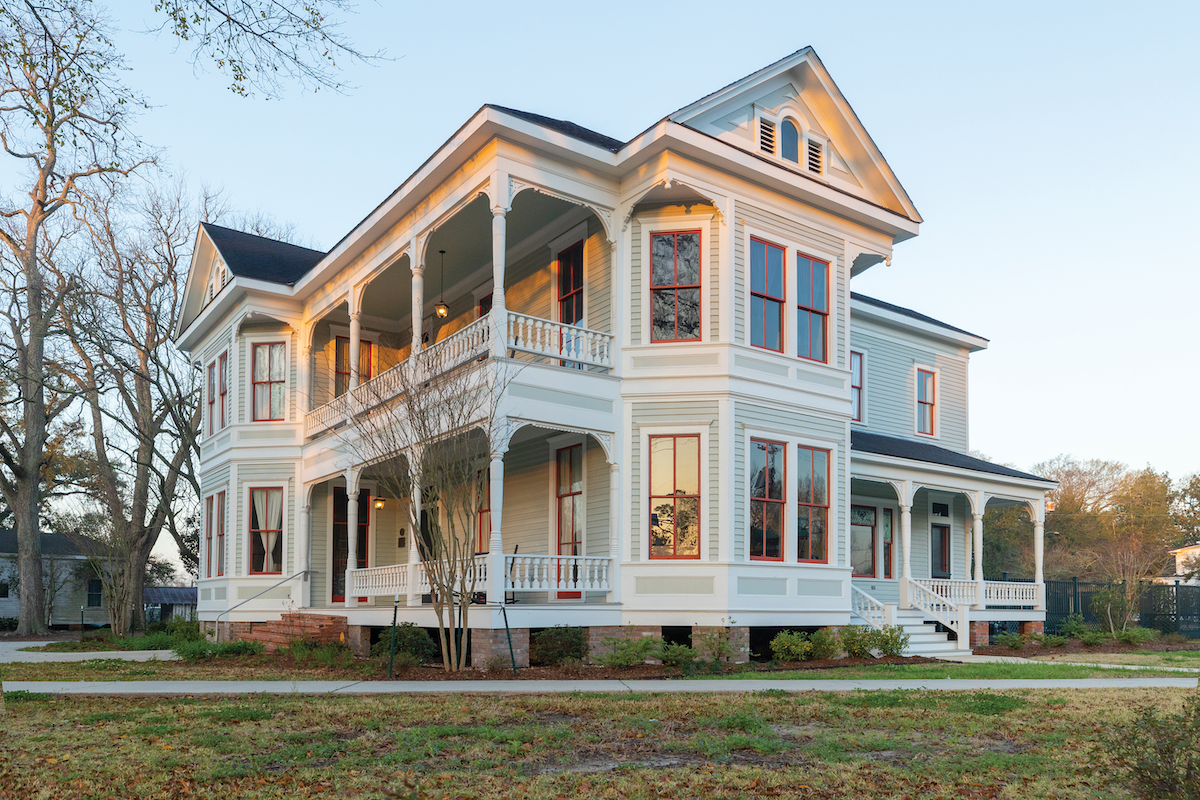It's two weeks before Christmas and the J. Arthur Roy House could easily pass as the set of a Hallmark movie. Evergreen garlands, wreaths and jaunty crimson bows drip from its 122-year-old Queen Anne double balcony. Inside the vestibule, a towering cypress staircase creates the ideal backdrop for a romantic meet cute. But something else is playing out here today – an equally charming reunion between old friends.
Dr. Barry Ancelet and Dr. Vaughan Baker are founding members of the Center for Louisiana Studies. They met in the 1970s as members of an academic cohort who cultivated what is now an internationally recognized hub of scholarship within the College of Liberal Arts at the University of Louisiana at Lafayette. "The Center," as they affectionately call it, is celebrating the final days of its 50th year. I'm here to learn how it all got started. But first, they have a question.
"Do you know about the Merovingians?"
I consider fibbing, then shake my head sheepishly at the professor emeritus of Francophone studies and the former head of the Department of History and Geography.
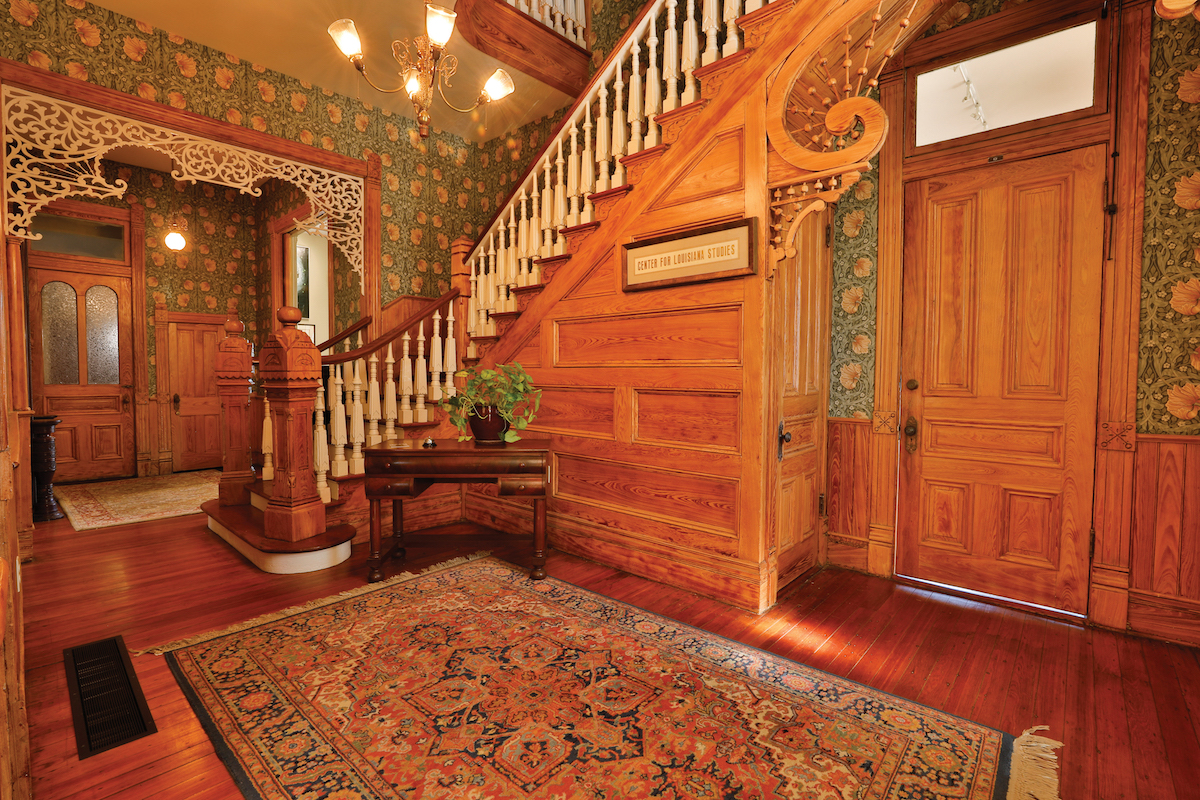
Instantly, they're in lecture mode. The Merovingians, referred to by some as the first kings of France, "were a bit maligned," said Ancelet. "The do-nothing kings," chimed in Baker, explaining their reputation as figureheads, hidden away except for ceremonial occasions. This reference is important, they told me, because it speaks to the Center's humble origins, tucked behind a double glass wall in a tiny room on the third floor of Edith Garland Dupré Library.
That location couldn't be further (figuratively) from the Roy House, the historic landmark across campus. The Center's new headquarters sits prominently at the buzzing intersection of Johnston Street and University Avenue. After an approximately $1.5 million, multiyear restoration campaign, shepherded across the finish line by the Center's current director Dr. Joshua Caffery with support from private donors and a grant from the National Endowment for the Humanities, the oldest building on campus has been reborn as a beacon for Louisiana culture.
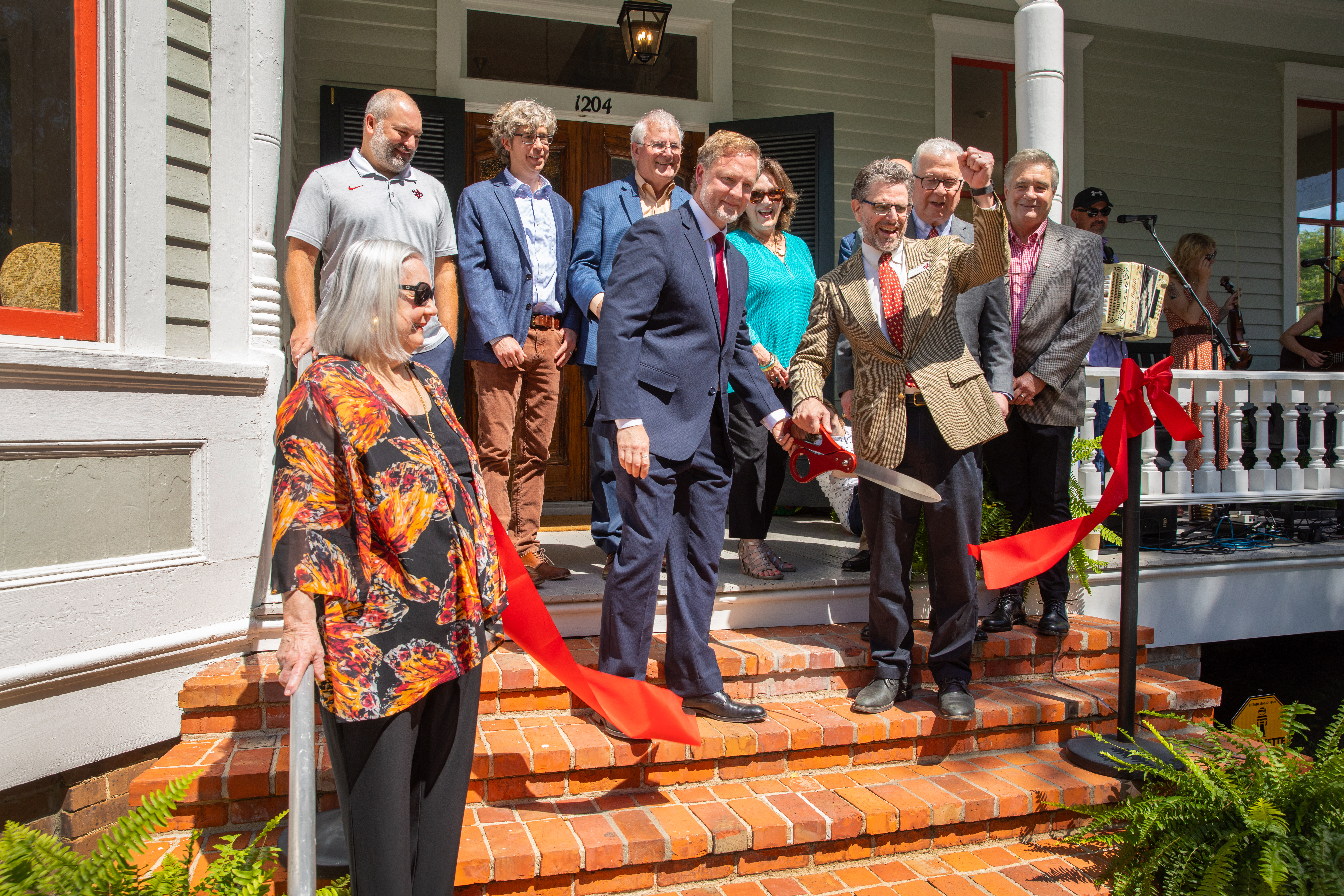
The alchemy that originally manifested this vision came together, like most good things in south Louisiana, over rice. As Ancelet and Baker tell it, the Center's founding director, Dr. Glenn Conrad, convened a crew of scholars from multiple disciplines for reoccurring roundtable discussions. These meetings evolved organically into salon-style dinner parties, anchored by Ancelet's smothered wild game gravy. Baker attributed the Center's early academic achievements to this natural social camaraderie and a shared belief in the power of stories lurking in their own backyard.
But blazing a new path within the University took some elbow grease. The cadre privately called themselves the "Order of the Merovingians" as a cheeky nod to the growing pains – and the physical and scholarly isolation – they felt in the beginning .
"What we were doing on the one hand was perceived as provincial, but what those folks hadn't factored in was the fact that the universe is composed of an infinity of localities. You can do a really good job at this because you're here and you're in it, and you have access to it. Why wouldn't you do that?" said Ancelet. "Why would we go off to South Africa and try to understand apartheid? That wasn't our thing. This was our thing."
The "this" he's referring to could fill an entire section of a library, or a bookstore, as evidenced by the stacks of bound material for sale from UL Press surrounding us in the Roy House parlor. It's everything we hold most sacred: from our songs, recipes, photographs, traditions, folklore and histories to the stories of resilience and unsung heroes that define our distinct brand of Southern culture. The Center preserved these in print. It also brought them to life in festivals, concerts, albums, radio programs, symposiums and community events. This outreach remains central to the Center's mission.
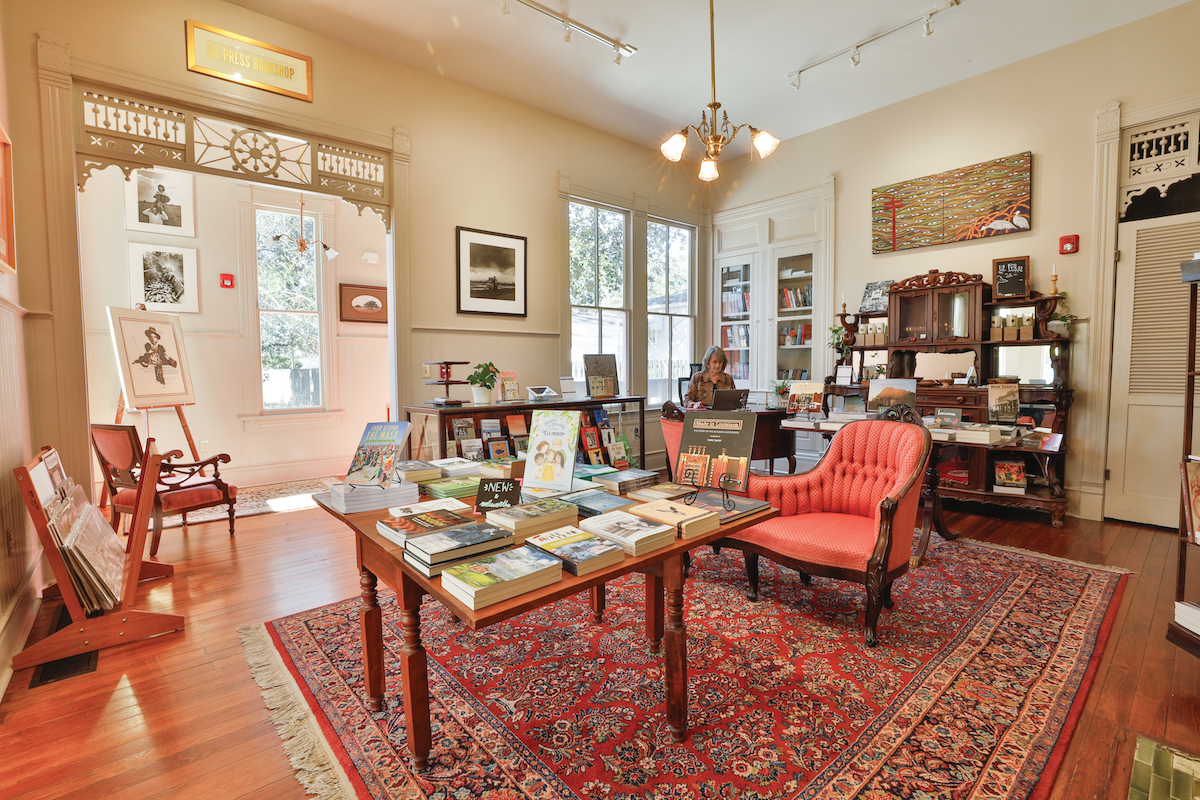
"It came out of that team effort," said Baker. "It took academe out of the ivory tower and into the streets. And it was amazing for all of us on both sides, the people who were experiencing it, and those of us who were producing it. It redefined Louisiana studies is what it did."
The Merovingians moniker didn't last for long as Ancelet, Baker and Conrad, along with their peers, Dr. Carl Brasseaux, Dr. Mathé Allain and Dr. Amos Simpson, began receiving widespread recognition for their scholarship. They renamed themselves the Order of the Palmetto, in honor of the native evergreen known for its adaptability and vigorous growth. "The University administration came to really appreciate seriously the work that was being done here," said Ancelet, referring to former President Dr. Ray P. Authement. "He saw the impact of it."
This support led to the Center's physical expansion on the third floor of the library to showcase its growing archives. In addition to the acquisition of historical documents and other primary materials, field recordings became a key ingredient to the collection. Ancelet said these preservation efforts widened resources available for future researchers. Baker said reaching beyond documents allowed the Center to capture and tell a more inclusive story about the cultures of Louisiana. "What happened with folklore, and with women's studies and African American studies – you can't use traditional sources, because they are left out," said Baker. "So, you have to find new source material."
Fast forward a few decades, and the Center boasts the world's largest collection of Cajun and Creole primary source material. This diverse collection of oral histories, field recordings and visuals from all 64 Louisiana parishes remains in the Center's library archive. The move to the Roy House, however, fulfilled a long-standing vision to make the work more accessible. The house isn't just office space – its public face matches its public mission. The Roy House serves as an interactive community center, research destination and bookstore. Peek around its ornate moldings today and you'll find an archivist, research coordinator, program director, UL Press staff and graduate students who are eager to share their expertise.
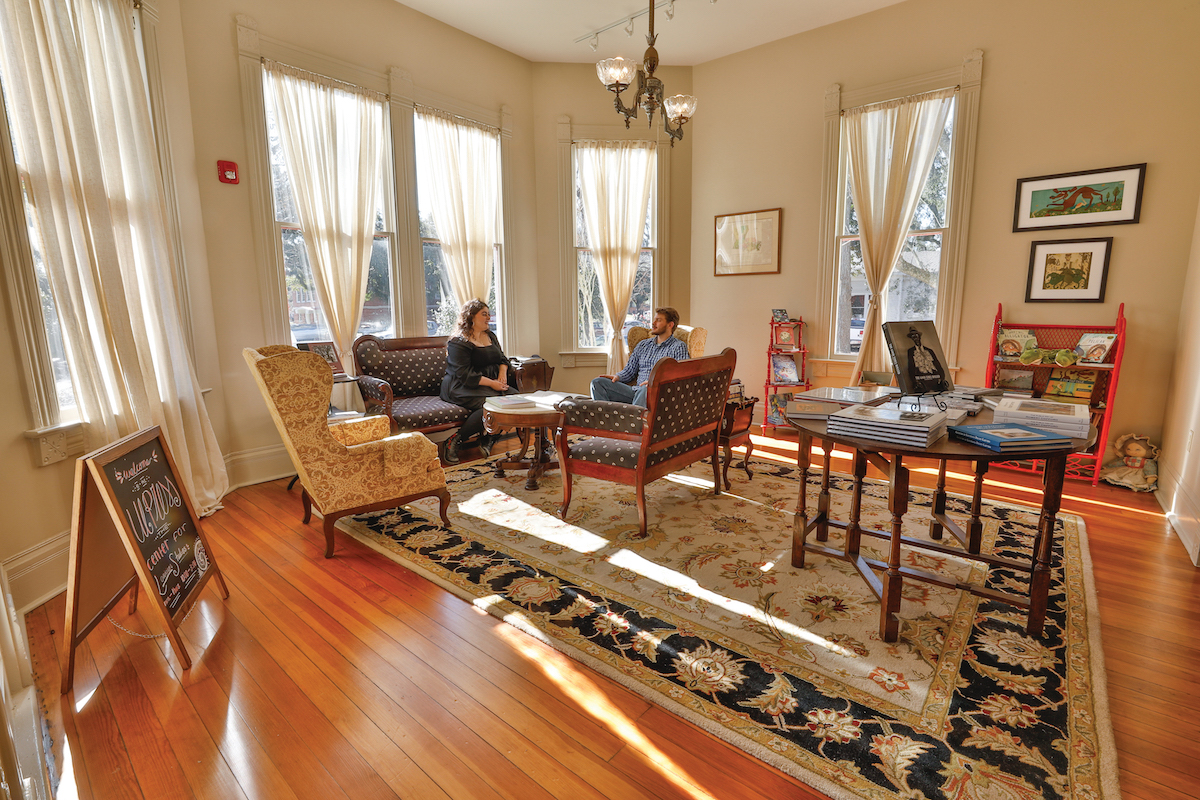
Camille Harrington is earning her master's degree in French while working as a graduate assistant at the Center. Her passion for her Cajun heritage grew out of conversations with her grandfather around the kitchen table. She said because of its origins as a family home, the Roy House facilitates a similar intimacy for cultural discussions – which is especially meaningful to her generation.
"It makes our work accessible," said Harrington. "I think there's going to be a lot more interaction between the community and the Center."
Harrington gives tours of the Roy House and said she loves explaining to guests how the original owner of the house, J. Arthur Roy, chose the home's location because of its proximity to an institute of higher learning. Roy was a Lafayette businessman and early supporter of what was then Southwestern Louisiana Industrial Institute at the turn of the last century. He completed the house in 1901, around the same time the campus was being built. "This house has always watched over the development of the University," said Harrington. "There's just something kind of sweet about that."
Caffery said since opening in 2023, the Roy House has received visitors from around Acadiana who are thrilled to see the old house restored to its former glory. It has also hosted international scholars and recording artists who come to explore the Center's world-class archive of Louisiana French songs. He said the appreciation for its architectural and musical preservation speaks to the Center's broader mission. A published folklorist, poet and Grammy-nominated musician, Caffery said he deeply values the University's role as an innovator, but also as a caretaker.
"Sometimes you build something like a beautiful house or a beautiful song, and you're not necessarily going to improve on that," said Caffery. "So, you might as well find a way to keep it around."
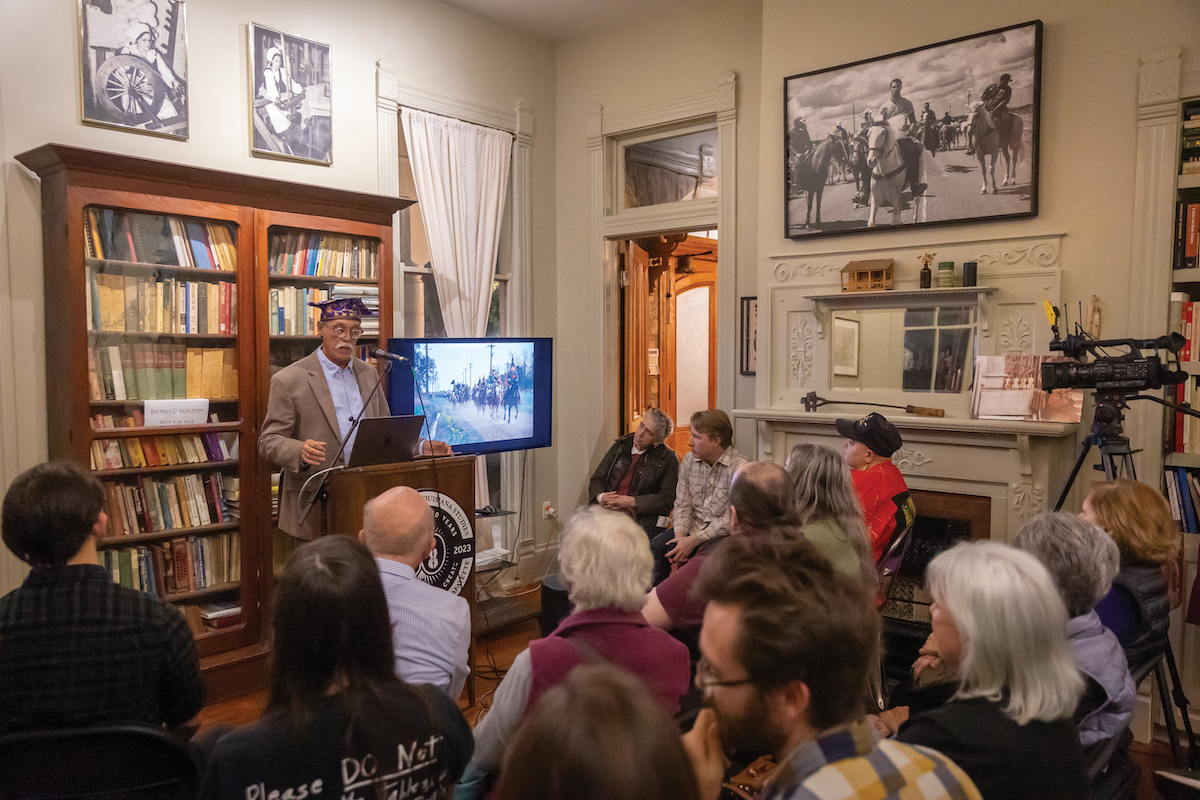
Now it's two weeks before Mardi Gras, and Ancelet has returned to the Roy House. He's donned a purple, medieval-style professor's cap to lecture to a standing-room-only crowd. The Center has recently revived its "In Your Own Backyard Workshops" for the first time in 10 years, and this presentation on south Louisiana Mardi Gras songs has attracted an infant, octogenarians and every generation in between. The presentation culminates with a raucous singalong led by masked revelers crooning en français. The Merovingians' legacy lives on.
Video: Take a tour of the restored Roy House.
Photos: The Center for Louisiana Studies' new home at the Roy House helps foster its public mission to preserve and cultivate Louisiana culture. Photo credit: Doug Dugas / University of Louisiana at Lafayette Video credit: Michelle Gomez / University of Louisiana at Lafayette
